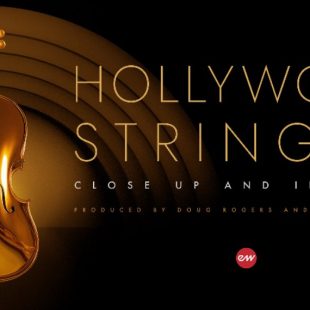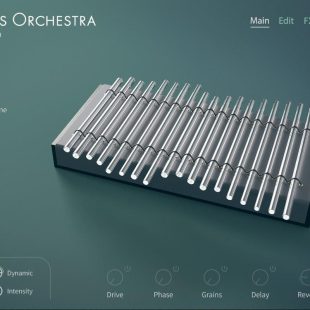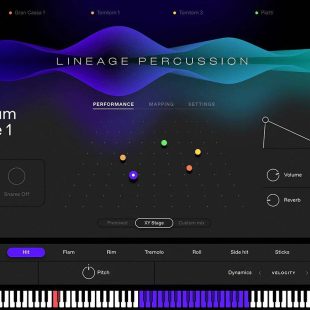Modbap Modular ships Trinity and HUE Eurorack synths.
Having recently made musical waves by being debuted Stateside at Knobcon Number Ten and Brooklyn SYNTH+PEDAL EXPO in September and October, respectively, black-owned Eurorack modular synthesis and electronic musical instrument manufacturer Modbap Modular is proud to announce that it is now shipping Trinity — the fourth Eurorack entry in its growing product portfolio as a three-channel DIGITAL DRUM SYNTH ARRAY (effectively performing as three powerful drum voices packed into a 20HP module with a tip of the proverbial (electronic hi-) hat to the typical (kick, snare, and hi-hat) core elements of any modern beat-driven composition, albeit with some neat production tricks thrown into the musical mix) — and HUE — its immediate followup as an AUDIO COLOR PROCESSOR (packing a chain of five effects into a 6HP-width module, making drums bang with more magnitude and melodies morph into lush lo-fi tones)
Trinity takes the simple idea of tipping the proverbial (electronic hi-) hat to the typical (kick, snare, and hi-hat) core elements of any modern beat-driven composition and flipping that on its head by combining its three channels with an array of drum synth algorithms that use various synthesis types — namely, BLOCK (analogue- inspired drum synth building blocks featuring a sine and triangle core; great for traditional electronic drum creation), HEAP (additive drum synth with 12 partials; great for fun, natural sounds and pitched, percussive sounds), NEON (FM drum synth engine; great for high-quality FM drums, clangorous metallic percussion, and more), and ARCADE (quirky noise generator synth, reminiscent of classic Eighties-era arcade games with zaps, crashes, explosions, and more; great for claps, hi-hats, and even some vinyl noise approximations, as well as all sorts of fun percussion and degraded noises) — to allow for a wide variety of drum design capability that achieves and reaches far beyond the conventional. Clearly living up to its front panel-positioned DIGITAL DRUM SYNTH ARRAY wording, which immediately steers its users into a certain way of thinking, Trinity’s array of digital drum synth algorithms are very malleable, thanks to the seven sizeable knobs and four mini-pots positioned in the upper half of that distinctive-looking, triple-colour-highlighted-branded front panel. Put it this way: each control a specific parameter and characteristic — PITCH, SWEEP, TIME, SHAPE, GRIT, DECAY, EQ, CLIPPER, HOLD, VOL (volume), and, of course, CHARACTER — for each drum voice. The three — DRUM CV1, DRUM CV2, and DRUM CV3 — channels each have their own TRIG (trigger) and V/OCT (one-volt-per-octave) inputs in addition to extensive CV input options, all available for front panel-positioned patching purposes.
Trinity takes its capabilities several steps above and beyond anything comparable in the modular Eurorack world with CYCLE MODE options offering round robin and random playback, as well as two STACK modes. Musically, round robin cycles through the drum algorithm types one after another with each trigger, while random randomises the parameters of a channel’s chosen drum algorithm type with each trigger. Those STACK modes are inspired by the characteristics of chopped breaks where drums tend to overlap and fan out, depending on the content of the chopped source material. Trinity’s take on that allows the second and third drum channels to be triggered by the primary channel’s TRIG and V/OCT inputs; in addition, ‘secondary’ STACK SPREAD functionality allows for fanning out the stacked drums to taste.
Trinity’s uniquely performable and switchable OUTPUT matrix allows for the routing of each drum channel’s output to the MIX output, the individual — DRUM1, DRUM2, and DRUM3 — output, or ALL. As such, easy performability, mutability, parallel processing, or side chaining are all perfectly possible. Thereafter, Trinity’s USB MIDI connection allows for MIDI control over various parameters via one USB cable. Clearly, USB MIDI makes instant integration a cinch by simply connecting one USB cable from Trinity to a groove-box or computer.
All in all, then, Trinity packs a hefty percussive punch, weighing in at a 20HP width with 11 knobs, three drum channels, three trigger buttons, four drum algorithms based on four different synthesis types, 24 CV inputs, three-output switching with three individual outputs, a mix output, and MIDI-over-USB connection belying its 26mm depth.
HUE, however, simply colors its user’s sound — hence highlighting that the aim of its name is true, thanks to the COLOR PROCESSOR wording written across the top of its slimline front panel. Its initial concept was born out of a debate about the techniques and processes used to make drum machines sound so big, bold, and delicious. It is worth bearing in mind here, though, that the sounds that tug at the heartstrings of boom-bap, lo-fi, and, subsequently, Modbap — meaning the fusion of modular synthesis and boom-bap (or, indeed, any form of hip-hop) — are those demonstrating great texture, lush degradation, soft distortion, and big bold strokes of color.
Classic beloved drum machines were often processed with outboard gear; recorded to tape; pressed to vinyl; played over big, booming sound systems; sampled; resampled, and so on. It is no surprise, therefore, that those are the sounds that become nostalgic and reminiscent of all that the black-owned Eurorack modular synthesis and electronic musical instrument manufacturer adores about classic lo-fi boom-bap production, with HUE representing its attempt at bringing that vibe into Eurorack as a 6HP-width module.
Acting as a COLOR PROCESSOR, HUE’s effects chain signal path is as follows: DRIVE, FILTER, TAPE (saturation), LO-FI, and COMP (compressor), with the panel layout allowing for the DJ-style FILTER knob to sit in first position for ease of tweaking — LP (low-pass) when turned to the left through to HP (high-pass) when turned to the right. Digging deeper, DRIVE boosts and lightly distorts the signal, while SHIFT+DRIVE adjusts the DRIVE tone; the TAPE effect is intended to impart cassette tape saturation, while SHIFT+TAPE adjusts the intensity; LO-FI adjusts bit depth, while SHIFT+LO-FI adjusts sample rate; and, lastly, the one-knob COMP mini-pot serves as the final glue in the signal path that brings everything together. There are also DRIVE CV, FILTER CV, TAPE CV, and LO-FI CV inputs, as well as mono INPUT and OUT connections, collectively opening up a wealth of creative possibilities. Put it this way: when throwing creative modulation at it, HUE is truly a textural beast.
But best of all, HUE puts the power to shape and transform its user’s sound at their fingertips — perfect for beefing up drums while equally as magical when working on melodic content, which is exactly why it pairs so well with Trinity, as well as Osiris (https://www.modbap.com/products/osiris), a sensational-sounding BI-FIDELITYTM WAVETABLE OSC (oscillator) module for Eurorack. It is fair to say, then, that HUE — like its Eurorack siblings — exemplifies Modbap Modular’s musical mantra: Made for Eurorack, dope enough for boom-bap! Before buying the now-shipping Trinity and HUE modules that are manifestly musical must-haves, make sure that there is at least a 26HP-width space available in the Eurorack setup allocated to accommodate them!
The now-shipping Trinity module is available to purchase — at an MSRP (Manufacturer’s Suggested Retail Price) of $549.00 USD — via San Clemente, CA, USA-based distributor Electro Distro’s growing global network of dealers (https://www.electro-distro.com/dealers) — including Sweetwater (https://www.sweetwater.com), the USA’s number one eCommerce provider of music instruments and pro audio gear — or directly via its dedicated webpage (which includes more in-depth information) here: https://www.modbap.com/products/trinity







